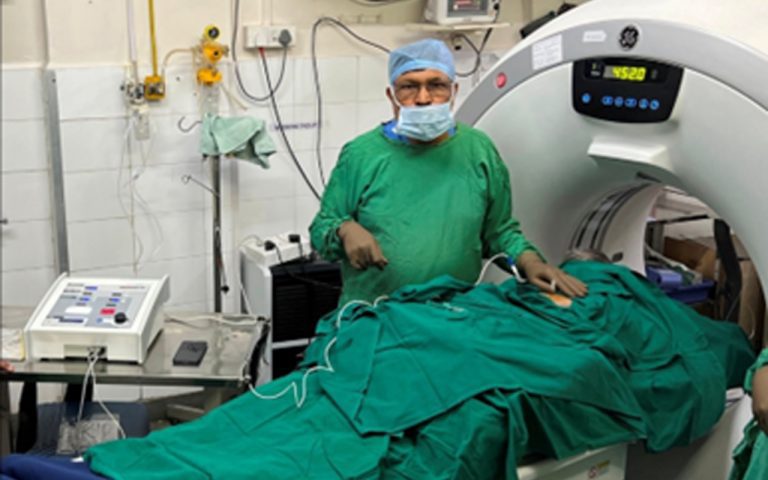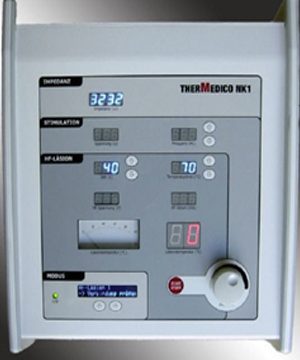

Radiofrequency Lesioning
Radiofrequency (RF) lesioning is a safe, proven means of treating chronic pain. It is minimally invasive procedures, so there is no need for a surgical incision. Radiofrequency current is used to heat a small portion of nerve tissue, thereby disrupting pain signals from that specific area but leaving other sensory capabilities intact.


RF Machine-
Includes temperature display, impedance monitor, stimulator, and lesion generator and timer. These all are useful for detecting entry near proper target.
How the Procedure is performed?
This procedure is performed in a well equipped operation theater with resuscitation facilities along with imaging equipments like fluoroscope CT Scan or ultrasound machine. Local anesthesia and a mild sedative may be used to reduce any discomfort during the procedure. Patient need to be awake and alert during both the sensory and motor stimulation process to help the doctor pinpoint where to properly place the lesioning electrode.
Under image guidance, a needle is placed into the target area. A microelectrode is inserted through the needle to begin the stimulation process. Once the needle and electrode placement is verified, treatment is ready to begin. RF current will flow through the electrode into the surrounding tissue. This causes the tissue to heat, which eliminates the pain pathways.
Clinical Uses of RF
Headache or facial pain due to Trigeminal Neuralgia, Glossopharyngeal Neuralgia, Sphenopalatine Neuralgia or Occipital Neuralgia, Back pain due to Facet joints or Sacroiliac Joint in Lumbar region, Neck pain due to Facet joints in Cervical region, Joint pain in Knee, Shoulder or hip, Sympathetically maintained Pain , Cancer Pain in different areas, Abdominal pain due to pancreatitis ( Splanchnic Nerve block ) are some of the pain conditions where RF Lesioning is advised.
Advantages of RF-
This is a Safe, accurate, effective and well-tolerated procedure with very few side effects and complications. Rapid recovery results in quick return to normal work & activity. RF Provides long lasting relief, 12 to 18 months or longer. When pain reoccurs procedure can be repeated.
Risk involved
Worsening of pain ( temporary), infection, damage to local structures including vessels and other nerves, bleeding are few reported problems.
Conclusion
RFA is a useful minimally invasive option for offering long-term pain relief, improving quality of life in a significant proportion of chronic pain patients. Careful patient selection & thorough knowledge about the proposed procedure are mandatory.

